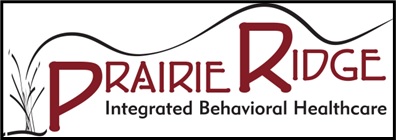Opiates/Heroin
What is it?
 Heroin is classified as an opioid drug that is made from morphine which is extracted from the poppy plant. Heroin comes in a white or brownish powder form as well as in a sticky black form also known as “black tar heroin”. A person can inject, snort, or smoke heroin. Other names for heroin include: horse, smack, junk, brown sugar, and dope.
Heroin is classified as an opioid drug that is made from morphine which is extracted from the poppy plant. Heroin comes in a white or brownish powder form as well as in a sticky black form also known as “black tar heroin”. A person can inject, snort, or smoke heroin. Other names for heroin include: horse, smack, junk, brown sugar, and dope.
After heroin enters into a person’s system, it travels very quickly to the brain and begins to have immediate effects. Even after using one or two times, a person can become addicted to this substance.
For many people, a heroin addiction can stem from prescription pain pill use. People who turn to heroin may be seeking a stronger or cheaper high.
Possible Health Effects
SHORT TERM
- Dry mouth
- Euphoria
- Clouded thinking
- Slowed breathing and heart rate
- Nausea and vomiting
LONG TERM
- Addiction
- Infection of the heart lining and valves
- Liver disease
- Collapsed veins
- Lung disease
- Hepatitis or HIV/Aids from needle use
- Death
WITHDRAWAL SYMPTOMS
- Restlessness
- Muscle and bone pain
- Insomnia
- Diarrhea
- Cold flashes
Treatment Options
Medication Assisted Treatment (MAT)
A treatment service that combines behavioral therapy and medications to treat substance use disorders. Common medication used in MAT are Buprenorphine, Methadone, and Naltrexone.
Inpatient and Outpatient Treatment at a Treatment Facility
Depending on a patients need, Prairie Ridge offers different levels of care. Please visit our Services tab for more information.
 Prescription Pain Medication (Opioids)
Prescription Pain Medication (Opioids)
Prescription opioids typically come in pill form and are given to treat severe pain that may stem from an injury or a chronic health condition. For most people, when pain medication is taken as prescribed by a physician, they are relatively safe and can reduce pain effectively. However, dependence or addiction are still possible even if taken as prescribed. Common types of opioids are oxycodone, hydrocodone, morphine, codeine, fentanyl, methadone, and meperidine.
Prescription Stimulant Medications (Amphetamines)
These medications are typically prescribed for attention deficit hyperactivity disorder (ADHA), narcolepsy (a sleep disorder), and in some instances, depression if the person has not responded to other treatments. If taken as prescribed, these medications can boost alertness, attention, and energy. For most people, when this medication is taken as prescribed by a physician, they are relatively safe and effective. However, dependence or addiction are still possible even if taken as prescribed. Taking someone else’s prescription can have serious health risks. Other names for these stimulants are: skippy, bennies, speed, or uppers.
Prescription Depressant Medications
Depressants slow down the normal activity that goes on in the brain and the nervous system. Physicians typically prescribe these medications for those who are anxious, cannot sleep, have muscle spasms, or suffer with seizures. For most people, when this medication is taken as prescribed by a physician, they are relatively safe and effective. However, dependence or addiction are still possible even if taken as prescribed. Depressants can be divided into three different categories; barbiturates, benzodiazepines, and sleep medications. Other names for these depressants are: Barbs, Benzos, Downers, GHB, Georgia Home Boy, Roofies, and Liquid X.

Get Started Today
Contact us at 641.424.2391 to learn more.
